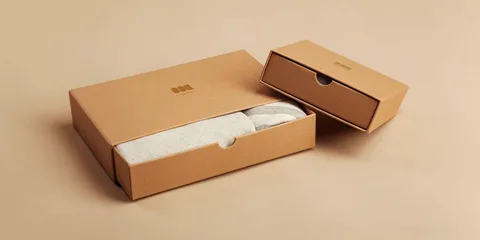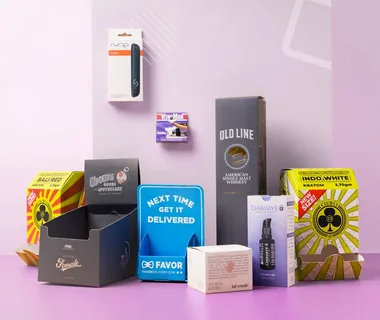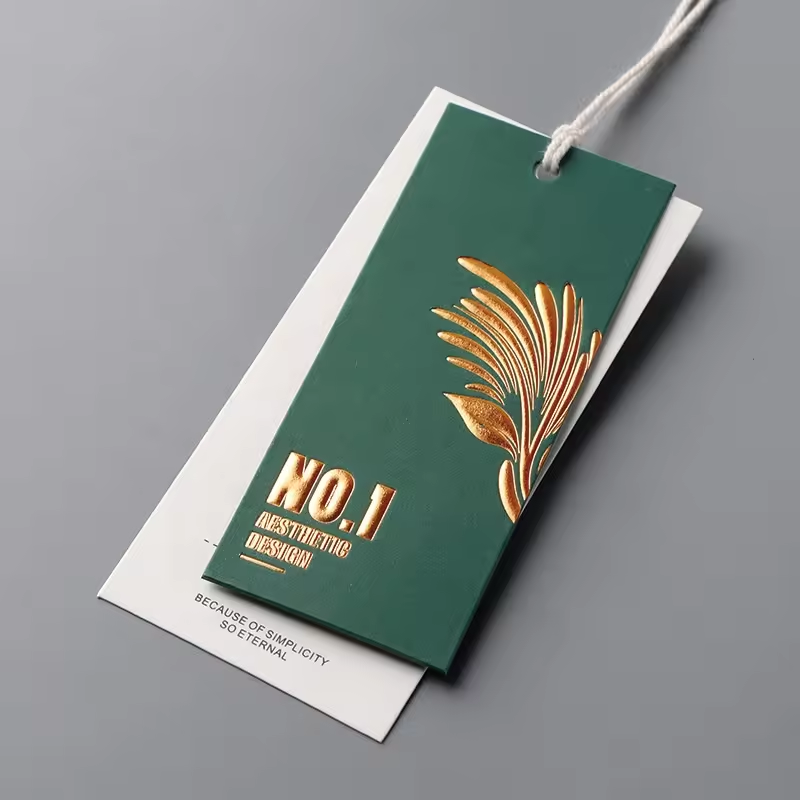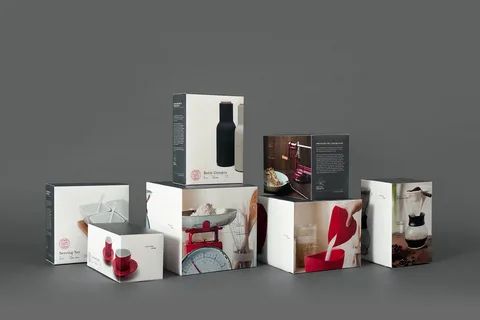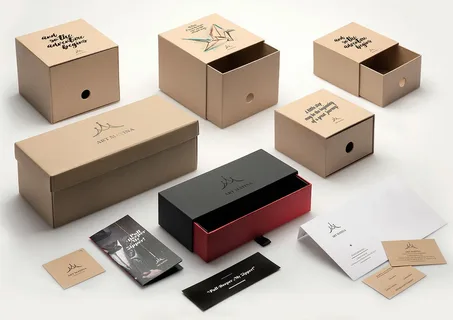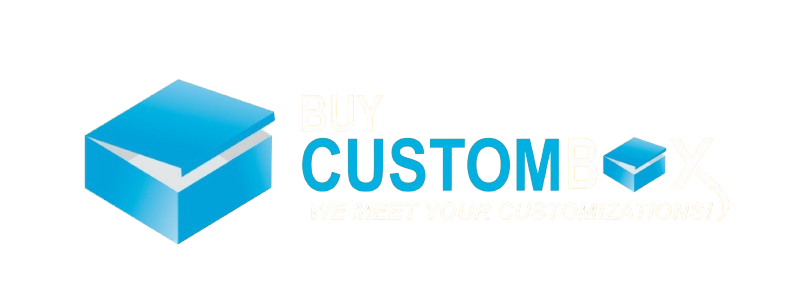Packaging is often an underestimated part of any product business or shipping process. The right box protects your product, enhances unboxing experience, communicates brand value, and can even reduce shipping costs. Whether you run an e‑commerce shop, ship crafts, send gifts, or need packaging for industrial goods, this guide helps you buy boxes for packaging in Canada smartly and cost‑effectively.
In this guide, we cover:
- Why choosing the right box matters
- Types of packaging boxes and materials
- Key specifications and dimensions to watch
- Where to find and source packaging boxes in Canada
- Step‑by‑step process: how to buy boxes for packaging
- Cost, minimum orders, and pricing strategies
- Custom vs stock boxes: pros and cons
- Tips to save, optimize logistics, and improve packaging yield
- How to handle branding and printing
- Sustainability, regulations, and shipping constraints in Canada
- FAQs and final advice
At one point, we’ll refer to how buycustombox can assist (as your brand mention).
Let’s begin.
1. Why the Right Packaging Box Matters
Before jumping into suppliers and buying, it’s important to understand why selecting the correct box matters. Many businesses make mistakes here that cost money, risk damage, or weaken customer perception.
1.1 Product Protection & Safety
A box must protect your product from shocks, impacts, vibration, moisture, compression, and rough handling. A poor box leads to damaged goods, returns, and dissatisfied customers.
1.2 Shipping Efficiency & Cost
Carriers charge by weight and dimensions. Over‑sized boxes waste space and cost more. Under‑sized boxes risk damage. The right box maximizes dimensional efficiency (i.e. size close to the product with minimal voids).
1.3 Customer Experience & Branding
High‑quality packaging improves unboxing experience, conveys professionalism, and can reinforce brand image. Custom printing, logos, inserts, brand messaging all matter.
1.4 Inventory & Storage
Oversized or non‑stackable boxes consume warehouse space. A well thought box allows for efficient stacking, flat storage when unassembled, and cost control on storage.
1.5 Compliance & Regulations
In Canada, there can be rules about labeling, content declarations, and materials (especially for food, dangerous goods, or cross‑border shipments). Boxes must often meet carrier (Canada Post, UPS, FedEx) standards.
Given these stakes, choosing and buying packaging boxes is strategic, not random.
2. Types & Materials of Packaging Boxes
To buy appropriately, you should know the different types and materials available. Here are common categories and pros/cons.
2.1 Box Types (Structural Styles)
- Regular Slotted Container (RSC): The most common corrugated shipping box. Four flaps on top and bottom.
- Full Overlap Container: Flaps fully overlap, giving extra strength.
- Five Panel Wrap / Wrap‑around: Uses a single piece that wraps around.
- Mailer / Shipping Boxes: Self‑locking mailer style boxes (fold into shape, no tape needed).
- Tuck‑end / Auto‑bottom Boxes: Good for lighter goods, often retail packaging.
- Two‑Piece / Lid & Base / Rigid Boxes: For premium products; more costly but premium feel.
- Display / POP Boxes: Boxes engineered to open up and display items in retail.
- Folding Cartons: For retail packaging, often made of paperboard.
- Custom Die‑cut / Specialty Shapes: Used for unique product shapes or branding distinction.
2.2 Materials & Construction
- Corrugated Board: Most common for shipping. Available as single wall, double wall, triple wall.
- Kraft / Brown Board: Natural look, eco‑friendly, good for lighter goods.
- White / Coated Board: For retail look, printing friendly.
- Paperboard / Chipboard: For light retail packaging.
- Rigid / Chipboard Covered: Premium boxes (e.g. jewelry, electronics).
- Special Laminates / Coatings: Gloss, matte lamination, spot UV, embossing, window cutouts, etc.
2.3 Strength & Flute Types
Corrugated boards come in flutes (A, B, C, E, F) affecting strength and cushioning. Single-wall (C flute common) is generally sufficient for many e‑commerce items; heavier or fragile items may need double-wall with extra strength.
3. Box Specifications & How to Size
When you go to buy boxes for packaging Canada, you must carefully specify dimensions, tolerances, weight, and special requirements.
3.1 Internal Dimensions
Measure internal length x width x height (i.e., inside space) that fits your product including any padding. That ensures the product fits comfortably.
3.2 Thickness & Board Grade
Choose board grade (single-wall, double-wall) depending on weight, fragility, and shipping stresses.
3.3 Edge Crush Test (ECT) / Burst Strength
These metrics indicate how much vertical or compressive load the box can endure (stacking). For heavier shipments, aim for higher ECT or burst values.
3.4 Tolerances
Allow small tolerances (±1⁄16 to ⅛ inch or metric equivalent) so the box can be manufactured easily.
3.5 Quantity & Order Breaks
Boxes are cheaper per unit as quantity increases. Be aware of quantity break discounts and MOQ (minimum order quantity). Low run customization often costs more.
3.6 Additional Features
- Window cutouts
- Inserts / dividers
- Handles / die cuts
- Printing (full color, spot color, PMS)
- Coatings / lamination
- Folding style or self‑locking
When buying, you’ll specify all of the above in an order sheet or form.
4. How to Buy Boxes for Packaging in Canada: Step‑by‑Step
Here is a procedural approach to help you confidently purchase your packaging boxes in Canada.
4.1 Define Your Needs
- What items will go inside? (weights, fragility)
- Required protection (padding, void fill)
- Shipping carriers and their limits
- Branding and unboxing aesthetic
- Budget constraints
4.2 Explore Stock vs Custom
- Stock boxes are ready‑made sizes sold off the shelf — cheaper, fast delivery, limited customization.
- Custom boxes are tailored to your dimensions, printing, coatings, and are more brand aligned — costlier and longer lead time.
Many purchases combine both: use stock for general shipments, custom for high-margin products.
4.3 Source Reputable Suppliers
Look for box suppliers that serve Canada (nationwide or in your province). Some notable names:
- Instabox: printers and packaging in Alberta, custom box manufacturing in Canada.
- SoOPAK: local Canadian maker of custom printed packaging.
- Custom Boxes Canada: offering custom boxes across the country, no die & plate charges for many orders.
- Shipmaster Containers Ltd: corrugated box supplier in Ontario (Toronto area).
- Canpaco: a packaging supplier offering boxes, tapes, etc. across Canada.
Also, regional or provincial box manufacturers often help with faster logistics and lower freight costs.
4.4 Request Quotes & Compare
When requesting quotes, be precise: dimensions, material, quantity, printing, finishing. Ask for sample cost, lead time, shipping cost, and hidden fees.
4.5 Order Samples / Preproduction Samples
Before full production, get prototypes or preproduction samples to validate dimensions, fit, print quality, structure, and assembly.
4.6 Approve and Place Full Order
Once the sample is approved, place the full order. Confirm lead times, delivery schedules, packaging flat or assembled, and payment terms.
4.7 Quality Checks & Receiving
When you receive your boxes, check for defects, print misalignment, strength, and ensure count matches invoice. Keep a sample from each lot for reference.
5. Cost, MOQs & Pricing Considerations
Cost management is crucial when buying packaging.
5.1 Key Cost Drivers
- Quantity (higher orders = lower unit cost)
- Material grade and thickness
- Custom printing, coatings, finishing
- Setup costs (die, tooling, plates)
- Shipping & freight within Canada
- Quality control and rejections
5.2 Minimum Order Quantities
Many custom box manufacturers have MOQs (e.g., 100, 250, 500 pieces). Some Canadian firms waive die costs to encourage smaller orders.
5.3 Break‑Even Cost Analysis
When evaluating stock vs custom, conduct a break-even: initial setup cost vs per-unit cost difference. Often after certain volume, custom becomes more economical.
5.4 Shipping & Freight within Canada
Freight cost can swallow savings. Ordering boxes regionally helps. Also, boxes ship flat (folded), so they save volume. Ask suppliers whether they ship via LTL, parcel, or pick-up.
5.5 Hidden Fees
Be cautious of hidden fees:
- Die or plate setup costs
- Shipping, handling, packaging of boxes
- Sample fees
- Tooling costs
- Custom duties (if imported)
Make sure the quote you get is “all in” or you understand components.
6. Custom vs Stock Boxes: Which to Choose?
6.1 When Stock Boxes Are Good
- When your product fits common box sizes
- When budget is tight
- When turnaround time is needed
- For non‑premium or bulk items
6.2 When Custom Boxes Are Worth It
- For branding and distinct unboxing
- If your product dimensions are irregular
- To reduce void space and shipping cost
- If you need special finishes, inserts, die cuts
6.3 Hybrid Strategy
Many businesses use stock boxes for the majority volume, reserve custom boxes for flagship or gift lines.
7. Branding, Printing & Decoration
If you want your packaging box to speak your brand voice, these are the considerations.
7.1 Printing Methods
- Digital printing: good for smaller runs, shorter setup time
- Offset printing: better for large runs, high fidelity colors
- Flexographic printing: common for corrugated boxes
- Spot colors / PMS: for brand consistency
- Full-color / CMYK: for photographic or complex artwork
7.2 Finishing & Coatings
- Gloss or matte lamination
- Spot UV coating
- Embossing / Debossing
- Foil stamping
- Window cutouts
- Foil / metallic inks
7.3 Insert & Protection
You may include foam inserts, cardboard partitions, plastic trays, or molded pulp. They improve protection and layout.
7.4 Brand Messaging Inside & Outside
Printing inside the box, using branded tape, stickers, thank-you cards, or tissue paper enhance the experience and surprise factor.
8. Logistics, Handling, and Shipping in Canada
Packaging boxes don’t operate in isolation. Your shipping and handling constraints influence what boxes you choose.
8.1 Carrier Requirements
Canada Post, Purolator, UPS, FedEx, etc. have rules about box strength, weight limits, dimension limits, how much weight per side, stacking strength, etc.
8.2 Stacking & Warehouse Handling
Boxes must withstand stacking in warehouses or trucks. Choose box strength accordingly (higher ECT, double-wall for heavy stacking).
8.3 Flat Storage & Assembly
Boxes ship flat. That saves space in your warehouse. Easy assembly is preferred. Some boxes auto-lock; others need tape or gluing.
8.4 Returns & Reverse Logistics
If returns are part of your business, consider designing packaging that is easy to reuse or repurpose as return boxes.
8.5 Seasonal Demand & Lead Times
During holiday season or peaks, lead times may stretch. Order well in advance.
9. Sustainability & Material Choices
Many consumers value environmentally friendly packaging, and Canada also has recycled material options and regulatory pressure.
- Use recycled or recycled-content corrugated board
- Choose recyclable, compostable, or FSC‑certified materials
- Minimize material waste by optimizing box dimensions
- Use soy-based inks or water-based coatings
- Design for reuse or return (e.g., robust boxes)
- Work with Canadian suppliers who use sustainable practices
10. Sources, Suppliers & Examples in Canada
Here are some real providers and illustrative examples when you want to buy boxes for packaging Canada.
- Instabox (Alberta, custom boxes & stock)
- SoOPAK (Canadian custom printed boxes)
- Custom Boxes Canada (nationwide)
- Shipmaster Containers (Ontario, corrugated boxes)
- Canpaco (packaging supplies + boxes)
- PremiumCustomBoxes (cardboard boxes, no die cost)
User insight via Reddit:
“Great Little Box Co; I have had clients use them … check them out.”
“I’ve good luck with The Packaging Company … often ordering boxes and supplies.”
These hints reflect that Canadian small businesses often search local or regional packaging houses or distributors, or even reuse fulfilling boxes.
One practical approach is to order a variety of stock sizes from suppliers like Instabox to test which sizes are efficient for your product SKUs before committing to custom.
Also keep in mind that environmental certifications (e.g. FSC, recycled content) can differentiate your packaging in the market.
11. Tips for Getting the Best Value & Avoiding Mistakes
Here are actionable tips to optimize your box buying.
- Order enough variety of sizes so that each product doesn’t end with too much void space.
- Use void fillers (bubble wrap, air pillows, paper) smartly rather than oversized boxes.
- Consolidate orders across SKUs to meet MOQ thresholds.
- Negotiate volume discounts or cross‑SKU bundling with your box supplier.
- Ask for waiving die plate charges or reduced setup costs for repeat orders.
- Use local suppliers where possible to reduce freight cost and lead time.
- Keep box designs modular for future reuse or reordering.
- Maintain a buffer stock of your most used sizes.
- Track packaging cost as part of product cost (COGS) and monitor margin impact.
- Continuously reassess your box usage: maybe consolidation, right-sizing, or alternate suppliers can reduce cost.
12. Frequently Asked Questions (FAQs)
Q1: What is the difference between “buy boxes for packaging” and “buy boxes for packaging Canada”?
A: The first is a general search or intention to purchase packaging boxes. The second specializes in boxes being acquired within Canada. That means local suppliers, lower freight, compliance with Canadian shipping norms, and sometimes domestic material sourcing.
Q2: How do I know what size box to order?
A: Measure your product’s length, width, height. Add padding allowance. That becomes internal box size. Then determine board strength based on weight and shipping stress.
Q3: What’s a safe quantity to start with?
A: Start with stock box stock in moderate quantities (e.g. 50–200 units) to test dimension efficiency. Once you are confident, move to custom runs with MOQ (often 250–500+).
Q4: Can I buy boxes online in Canada?
A: Yes — many suppliers offer online quoting, design, and ordering tools (Instabox, Custom Boxes Canada, SoOPAK, etc.). Some even ship nationwide.
Q5: Are Canadian box suppliers cheaper than importing from abroad?
A: It depends. Canadian suppliers avoid import duties, long freight, and lead time. But production cost might be higher domestically. For large runs, overseas might be competitive, but you must factor in all landed costs.
Q6: What are hidden costs when ordering boxes?
A: Setup fees (dies, tooling), sample fees, revision charges, freight, storage fees, damage, custom duties (if imported), handling, etc.
Q7: How often should I renegotiate with my box supplier?
A: At least annually, or when your order volume changes. Ensure you revisit pricing, freight, and terms.
Q8: Are custom printed boxes always better than plain stock ones?
A: Not always. The premium may not pay off for low margin products or for shipping‑only items. Use custom printing strategically (premium products, gift packaging, marketing lines).
Q9: Is sustainability more expensive?
A: Sometimes the material may cost more, but over scale and with smart design (less waste, recycled content, fewer coatings) you can manage costs. The brand benefit may justify marginal difference.
Q10: How do I avoid counterfeit or low quality box suppliers?
A: Always request samples, check references, inspect print quality, confirm certifications, read reviews, and ensure a contract or agreement. Using well-known Canadian suppliers minimizes risk.
13. Conclusion
Buying packaging boxes with confidence in Canada requires planning, knowledge, and smart sourcing. From defining your product needs, selecting box styles and materials, sourcing local or regional suppliers, to balancing cost, printing, and sustainability — each step matters.
By following this guide, you’ll be more aware of how to buy boxes for packaging, how to manage cost and quality, and how to find trusted suppliers across Canada. If you ever need tailored solutions or custom packaging support, your brand (one mention here) can rely on buycustombox to assist in design, prototyping, and delivery.


